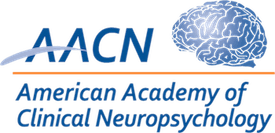- Disruptive Technology Initiative
- / DTI Tech Tips
- / Cognitive Ecological Momentary Assessment (EMA): Assessing Cognition in the Wild

Cognitive Ecological Momentary Assessment (EMA): Assessing Cognition in the Wild
Author: Naomi Chaytor, PhD, ABPP
Professor
Department of Community and Behavioral Health
Washington State University ELson S. Floyd College of Medicine, Spokane, WA
Author Disclosure: Dr. Chaytor’s NIH-funded research includes the use of cognitive EMA; she also serves as a paid consultant for Adaptelligence, LLC related to the use of these methods.
Synopsis: The use of cognitive EMA, when applied in a careful and planned manner, can complement traditional neuropsychological assessment, and provide an important tool for early diagnosis, monitoring, and intervention.
Overall Description: The widespread availability of smartphones with large, high-resolution displays has resulted in new opportunities for ambulatory assessment of cognition in everyday environments. This field holds incredible promise for uncovering the internal and external conditions that influence cognitive performance in individuals over time in real world environments, as well as potentially revolutionize our understanding of the very nature of cognition. Many psychological and physiological processes, including cognition, show variation over time within people. This variation may be either a key feature of the underlying construct (e.g., alertness, attention) or due to the influence of “confounding” variables (e.g., the effect of fatigue or anxiety on cognitive performance). EMA allows direct investigation of data that were previously unavailable or impractical given the limitations of traditional assessment approaches and available technology.
Clinical Application: By offering high frequency assessment of cognition over time, coupled with assessment of potentially reversible factors (e.g., perceived stress, sleep, negative affect), clinicians may be able to identify early evidence of cognitive change, as well as offer recommendations to maximize cognitive performance prior to, or after, traditional clinical services. EMA may provide a more sensitive identification of early cognitive and neuropsychiatric manifestations of neurodegenerative diseases, making it suited for monitoring the general aging population or those who may be at increased risk due to positive biomarker status or genetic risk. EMA cognitive assessments at regular follow-up intervals following an initial diagnosis or injury could be used to monitor recovery/decline and help determine when additional in-person follow-up, and/or new treatment recommendations are warranted. A key opportunity for future research is to identify the most optimal use of EMA in combination with traditional in-person clinical assessment. The combination of these methods may reduce some of the main obstacles encountered in the use of cognitive EMA, while also maximizing the benefits of this approach.
Justice, Equity, Diversity, Inclusion Issues: EMA cognitive assessment has the potential to remove many of the logistical barriers to clinic-based neuropsychological assessment that limit access (e.g., travel, caregiving responsibilities, work, mobility impairments, rural/remote areas, healthcare access/insurance). Because cognitive EMA is based on within-person change in performance over time, the need for demographically-corrected normative data is reduced. Despite these potential strengths, disparities may exist in technology literacy, as well as access to devices and reliable internet connectivity.
Limitations: There are also unique challenges that need to be considered, including the need for standardization and validation of new assessments (in terms of both the task itself and the device it will be completed on), and understanding technology features that may impact test scores (e.g., operating system type and updates, screen size and touchscreen responsiveness, battery life, and internet speed/reliability). These factors create significant challenges for normative data collection and necessitate processes for quickly updating or correcting normative data to account for changes in technology. A related concern involves the test stimuli themselves and the inability to measure certain cognitive constructs or response modalities via a given electronic device (e.g., visual motor construction and manipulation). Clinicians may also be concerned about the inability to directly observe test-taking behaviors or assist more impaired patients with task instructions. Without visual/auditory observation, it is also possible that important environmental influences will not be appreciated (e.g., other people in the room, physical limitations, and unmeasured distractions).
For additional information on these topics see:
Chaytor, N.S. & Fonseca, L. (2022). Ambulatory Assessment. In T. D. Marcotte, M. Schmitter-Edgecombe & I. Grant (Ed.). Neuropsychology of Everyday Functioning (2nd Edition). New York: The Guilford Press.
Germine, L., Reinecke, K., & Chaytor, N. S. (2019). Digital neuropsychology: Challenges and opportunities at the intersection of science and software. The Clinical neuropsychologist, 33(2), 271–286. https://doi.org/10.1080/13854046.2018.1535662
Parsons, T. D., McMahan, T., & Kane, R. (2018). Practice parameters facilitating adoption of advanced technologies for enhancing neuropsychological assessment paradigms. The Clinical neuropsychologist, 32(1), 16–41. https://doi.org/10.1080/13854046.2017.1337932
“Have your own experiences and ideas you can share? Please do so!”
Comments/Experiences to Share?
Dear AACN members, please log in to share your comments or questions here.
